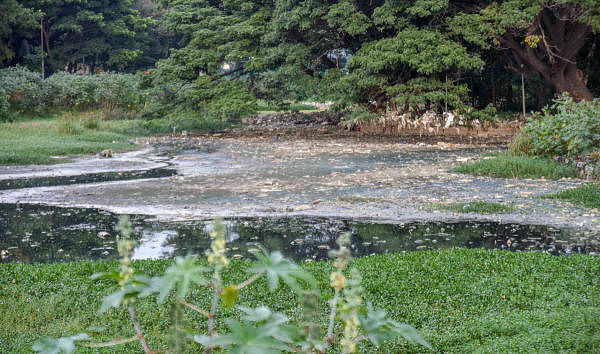
An alarming 53% of the city’s lakes restored by the Bruhath Bengaluru Mahanagara Palike (BBMP) are now in a ‘very poor water quality’ status while 34% have been categorised as ‘poor’ by an Indian Institute of Science (IISc) study.
In a stinging blow to the Palike’s rejuvenation process, the study by IISc’s Energy & Wetlands Group, Centre for Ecological Sciences, attributed the lakes’ condition to ‘unscientific restoration approaches’. Only six lakes — Jakkur, Kempambudhi, Devasandra, Ullal, Handrahalli and Agara lakes — could claim the ‘good water quality’ status.
The study found these factors at the core of the faulty restoration: Partial removal of silt required for shoreline stabilisation, not arresting the flow of untreated sewage and industrial effluents, unabated encroachments and sustained dumping of solid waste.
“The focus of rejuvenation was towards creating jogging path and beautification of the lakes rather than ecological restoration,” observed Dr T V Ramachandra, Sincy V and Asulabha K S, authors of the study ‘Status of Restored Lakes in Bangalore: Gaps and Solutions’.
The study group had monitored 45 lakes restored by the BBMP over the last decade. Of these, 24 water bodies, including Puttenahalli, Uttarahalli, Kasavanahalli and Kaikondrahalli lakes, were found to have ‘very poor water quality’.
Fifteen lakes, including Ulsoor, Dasarahalli, Sankey, Yediyur and Kodigehalli lakes, were categorised under ‘poor water quality’. Lakes with a Water Quality Index (WQI) value between 51 and 75 are categorised as ‘poor’. The water is fit only for irrigation.
Lakes with a WQI value between 76 and 100 are categorised as ‘very poor’. The water could be used for irrigation but with restrictions. Only those water bodies
with an index score less than 50 are considered fit for drinking.
Identifying big gaps in the restoration work, the study report noted: “Agenda of lake rejuvenation is only to utilise the allocated funds without any scientific evaluation of the lake and the need assessment.”
To revive the lakes, the study team has proposed a complete removal of accumulated, contaminated silt; a halt to the practice of reusing silt removed from the lakes; a total ban on dumping of waste and diversion of sewage; removal of all blockades at both outlets and inlets.
The team also sought removal of all encroachments in the lake bed, storm water drains and buffer zone “without any consideration or political interventions”. The researchers made a special mention of the role played by a ‘’nexus of consultants, contractors and engineers” and wanted them removed.